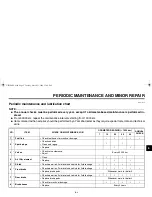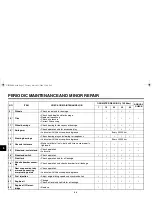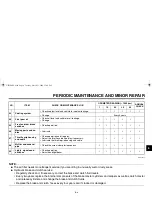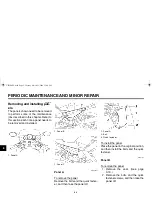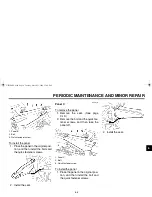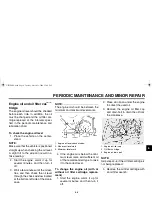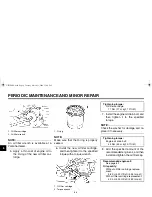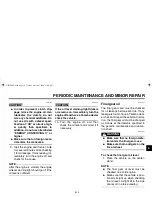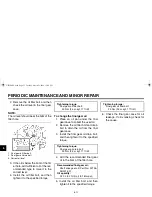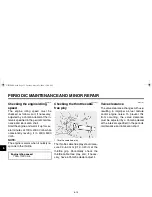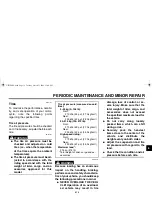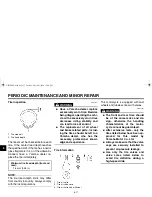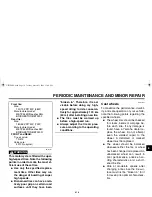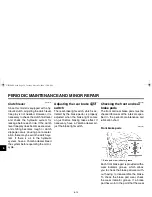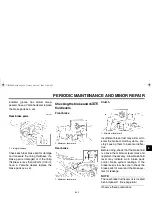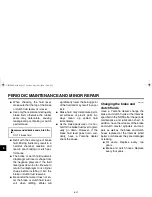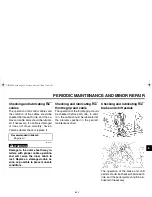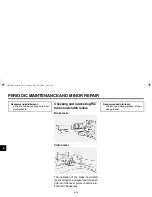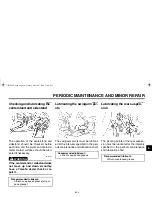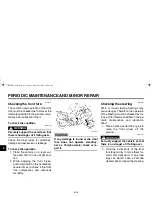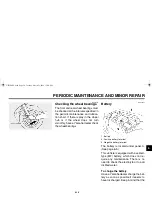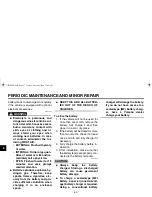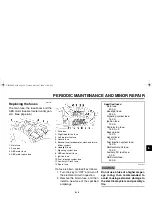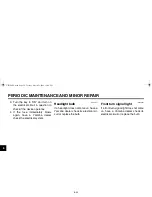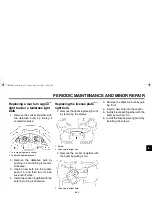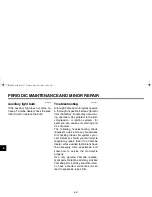
PERIODIC MAINTENANCE AND MINOR REPAIR
6-16
6
EAU21500
Tires
To maximize the performance, durabil-
ity, and safe operation of your motor-
cycle, note the following points
regarding the specified tires.
Tire air pressure
The tire air pressure should be checked
and, if necessary, adjusted before each
ride.
WARNING
EWA10440
●
The tire air pressure must be
checked and adjusted on cold
tires (i.e., when the temperature
of the tires equals the ambient
temperature).
●
The tire air pressure must be ad-
justed in accordance with the
riding speed and with the total
weight of rider, cargo, and ac-
cessories approved for this
model.
WARNING
EWA10450
Because loading has an enormous
impact on the handling, braking,
performance and safety characteris-
tics of your vehicle, you should keep
the following precautions in mind.
●
NEVER OVERLOAD THE VEHI-
CLE! Operation of an overload-
ed vehicle may result in tire
damage, loss of control, or se-
vere injury. Make sure that the
total weight of rider, cargo, and
accessories does not exceed
the specified maximum load for
the vehicle.
●
Do not carry along loosely
packed items, which can shift
during a ride.
●
Securely pack the heaviest
items close to the center of the
vehicle and distribute the
weight evenly on both sides.
●
Adjust the suspension and tire
air pressure with regard to the
load.
●
Check the tire condition and air
pressure before each ride.
Tire air pressure (measured on cold
tires):
0–90 kg (0–198 lb):
Front:
270 kPa (39 psi) (2.70 kgf/cm²)
Rear:
290 kPa (42 psi) (2.90 kgf/cm²)
90–215 kg (198–474 lb):
Front:
270 kPa (39 psi) (2.70 kgf/cm²)
Rear:
290 kPa (42 psi) (2.90 kgf/cm²)
High-speed riding:
Front:
270 kPa (39 psi) (2.70 kgf/cm²)
Rear:
290 kPa (42 psi) (2.90 kgf/cm²)
Maximum load*:
215 kg (474 lb)
* Total weight of rider, cargo and ac-
cessories
U5P5E0E0.book Page 16 Tuesday, March 21, 2006 12:00 PM

